Build a Nephron: Loop of Henle
1/8
There's no tags or description
Looks like no tags are added yet.
Name | Mastery | Learn | Test | Matching | Spaced |
|---|
No study sessions yet.
9 Terms
What is the ultrastructure of the cells in the loop of Henle?
The Loop of Henle is divided into three parts: the thin descending limb, thin ascending limb, and thick ascending limb
1)Thin descending and ascending limb
→ formed from squamous epithelium and is not involved in reabsorption and secretion due to its shape
2) Thick ascending limb
→ cuboidal in shape and play a more active role in reabsorption and secretion of solutes
What is the difference between juxtamedullary nephrons and superficial nephrons
1) Superficial Nephrons
→ housed closer to the periphery with their glomeruli close to the outermost portion of the kidney
2) Juxtamedullary Nephrons
→ deeper with the glomeruli closer to the boundary between the cortex and medulla
→ loops will descend much deeper into the medulla
How would you differentiate the roles between the proximal tubules and the loop of henle and distal nephron
The proximal tubule is the primary reabsorbing segment of the nephron that produces a fluid that is isosmotic to plasma
The loop of Henle and distal nephrons are responsible for producing a fluid that is hypo or hyperosmotic to plasma
How does reabsorption of water and sodium chloride occur in the thin descending limb and thick ascending limb

Thin Descending limb is extremely permeable to water while not permeable to salt and urea. While the thick ascending limb is only permeable to salt and not water. This means that water is reabsorbed best in at the descending limb
1) There is active salt transport out of the ascending limb of the Loop of Henle
→ this spot is impermeable to water while solutes continuously leave increasing the osmolarity in the interstitium in between the two loops
2) Because the ascending limb creates a high osmolarity, water can be reabsorbed readily across the thin descending limb
What solutes is the thick ascending limb responsible for reabsorbing?
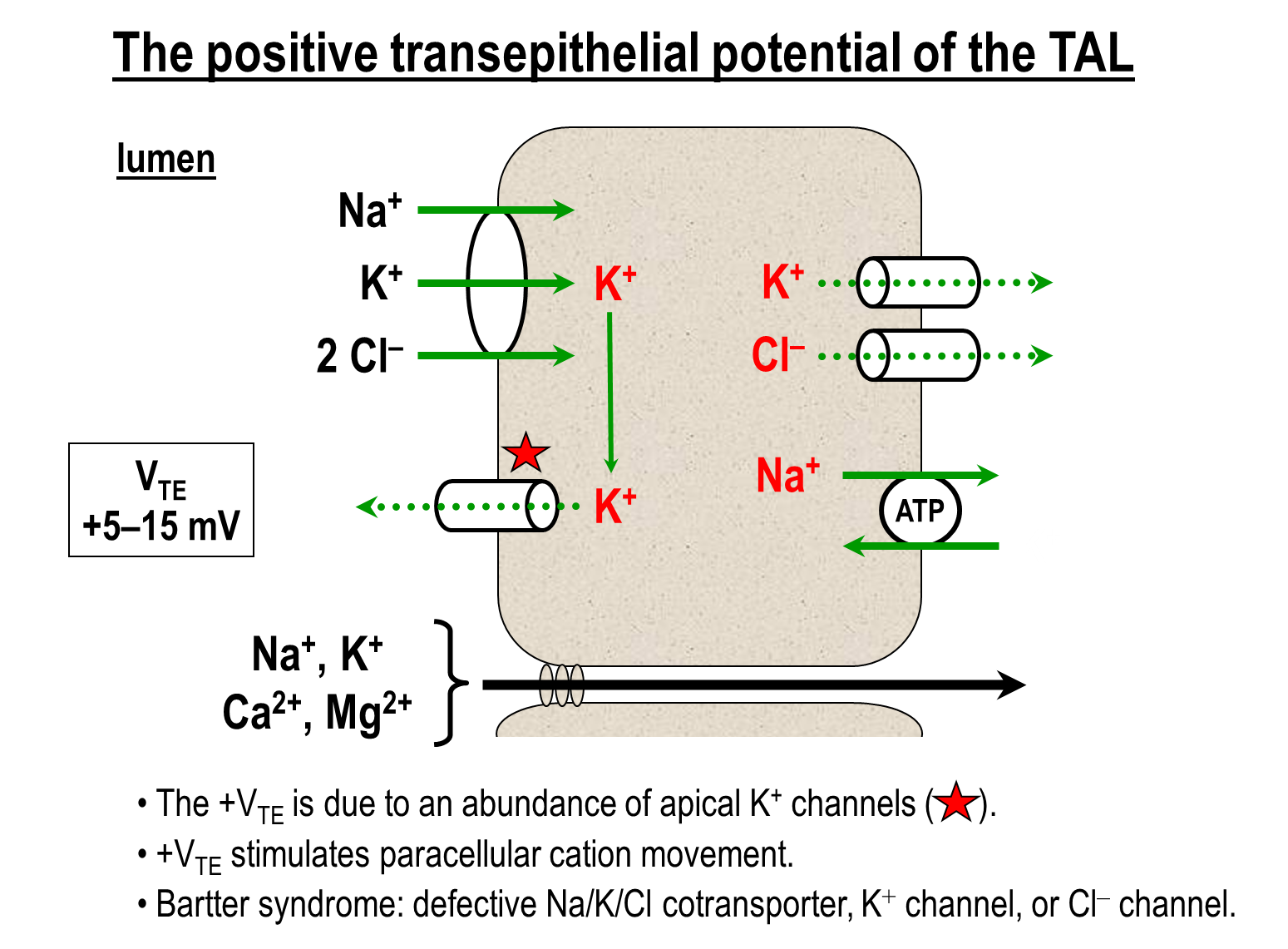
Thick Ascending Limb follows active reabsorption of solutes
1) Sodium Potassium 2 Chloride Co-transporter
→ active reabsorption of sodium, potassium, and 2 chloride ions into the cell
→ maintains a high potassium concentration intracellularly, which is then used by a apical potassium channel to push potassium back into the lumen
→ this creates a positive transepithelial potential which pushes other cations through the paracellular route such as sodium, calcium, magnesium, potassium etc
2) Some potassium that enters into the cell will also cross over the basolateral side and will travel via the paracellular route
How does the thick ascending limb reabsorb Sodium Chloride?
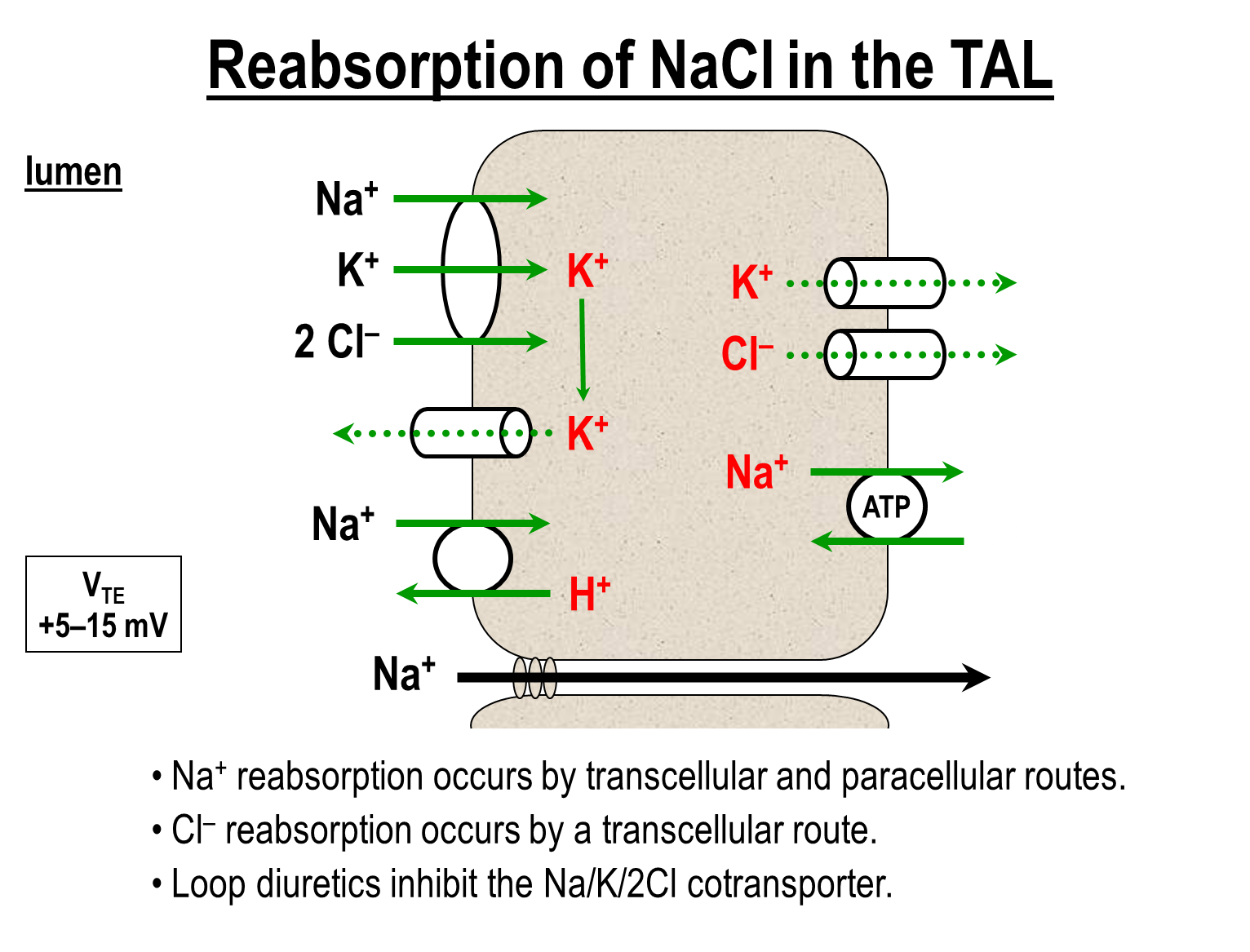
Reabsorption of sodium chloride follows the transcellular route and paracellular route
1) The Na, K, 2 Cl channel is responsible for uptaking sodium, chloride, and potassium
→ this creates a high potassium level intracellularly which is then pushed back into the lumen via a potassium transporter
→ this positive epithelial potential created by potassium being pumped into the lumen allows for paracellular movement of sodium
2) Sodium can also enter via the sodium proton exchanger
How is Calcium Reabsorbed in the Thick Ascending Limb?
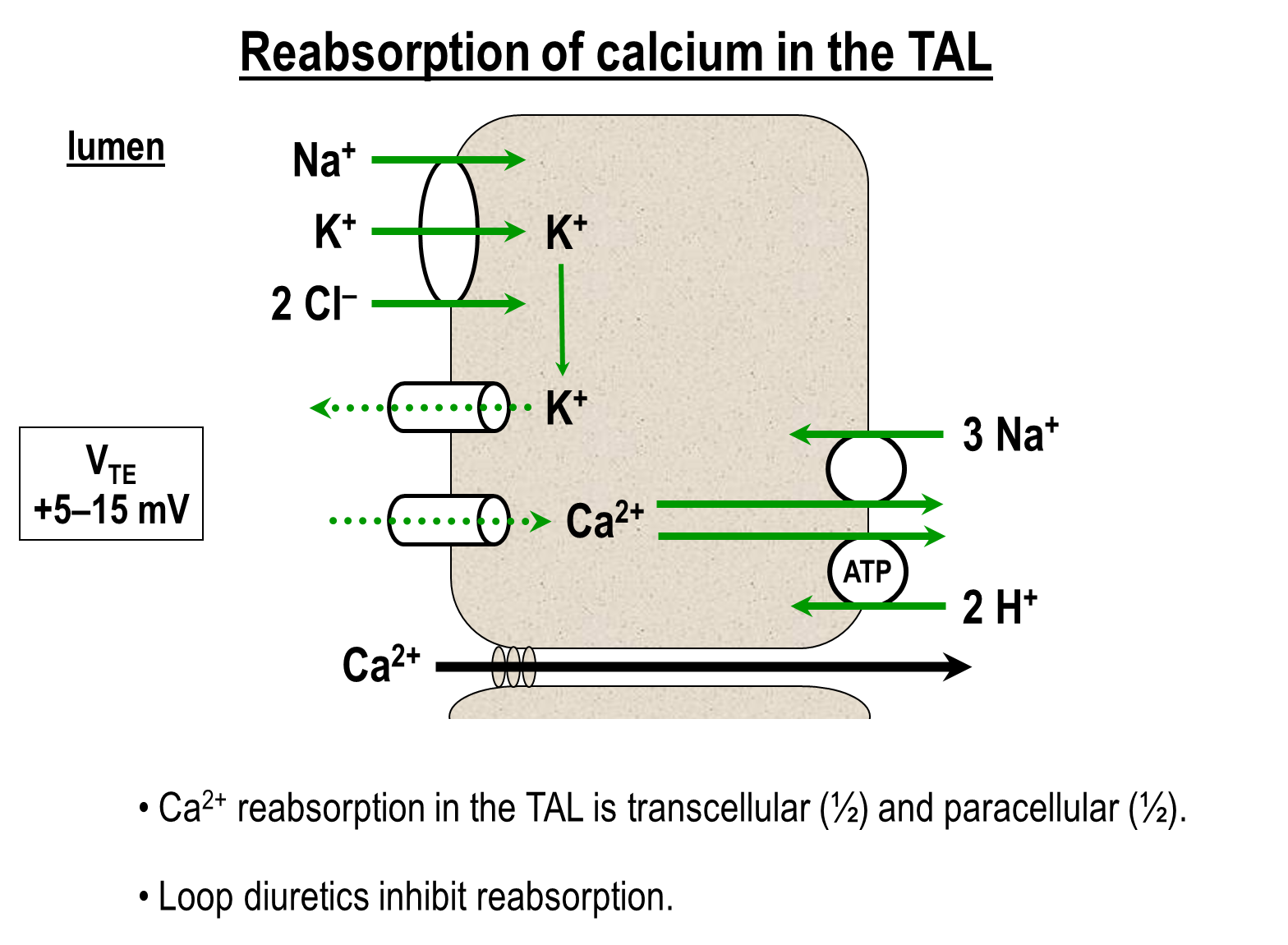
There is an apical calcium transporter that allows for reabsorption of calcium from the lumen. The calcium is then transported into the peritubular capillaries via two transporters
1) Sodium Calcium Exchanger
→ 3 calcium for one calcium
2) Calcium Pump - ATPase
→ one calcium for two protons
is also reabsorbed paracellularly as well
What is the regulatory mechanism for the NaKCl transporter?
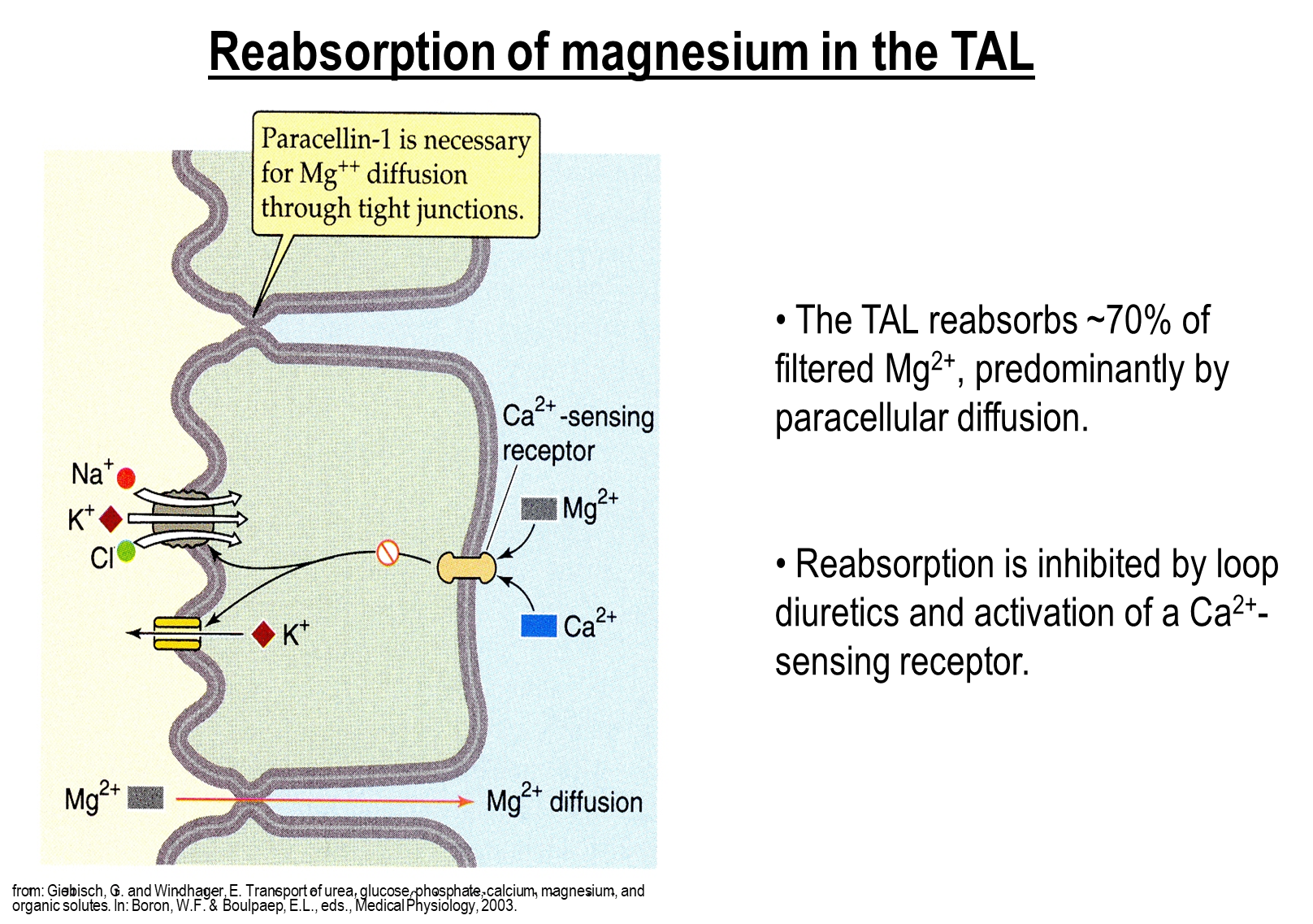
The Sodium Potassium 2Chloride Channel on the apical membrane of the ascending limb can be inhibited by a regulatory calcium sensing receptor on the basolateral membrane
→ this receptor when bound to either magnesium or calcium will inhibit both the NaK2Cl channel and the potassium channel on the apical surface
Inactivation of the channel will inhibit proton reabsorption paracellularly
→ this includes things like magnesium and calcium
What is Medullary Potassium Recycling
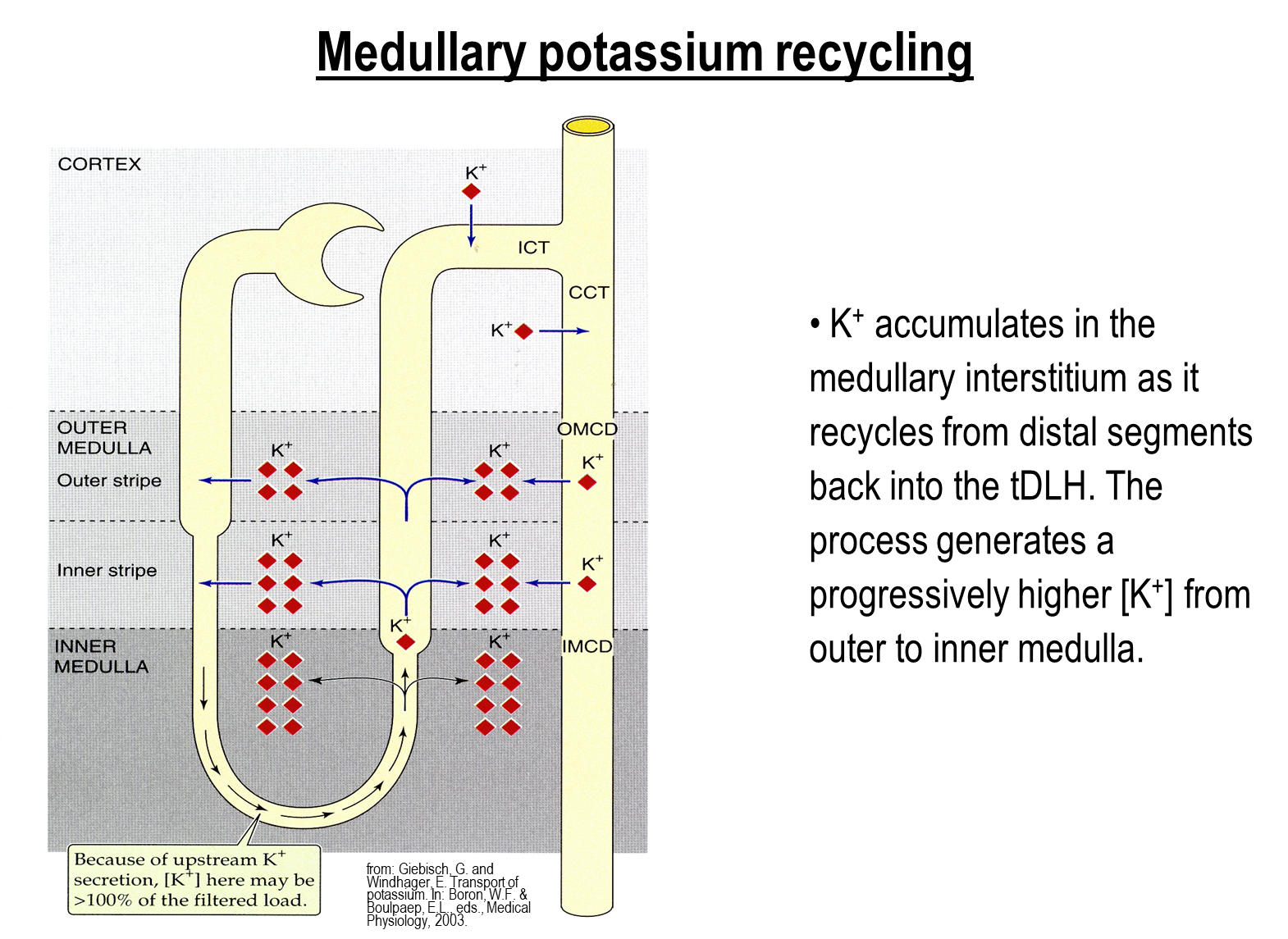
Potassium levels are recycled by our nephrons
1) Potassium dumped into the interstitium by the ascending limb can be reabsorbed by the proximal tubule
→ this reabsorption also creates a concentration gradient where there is more potassium deeper into the medulla because it gets trapped as the descending limb cannot reabsorb solutes